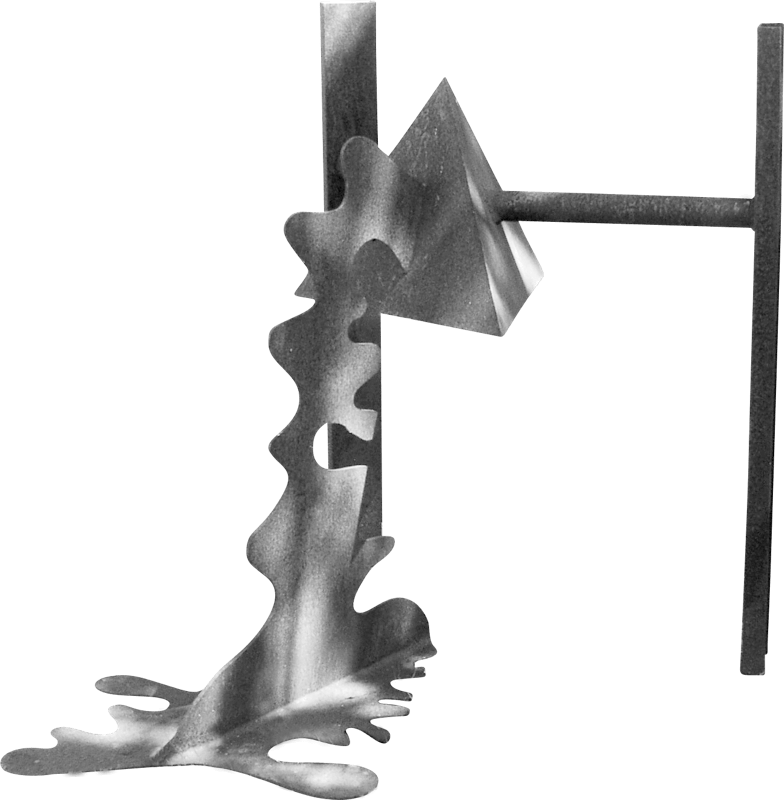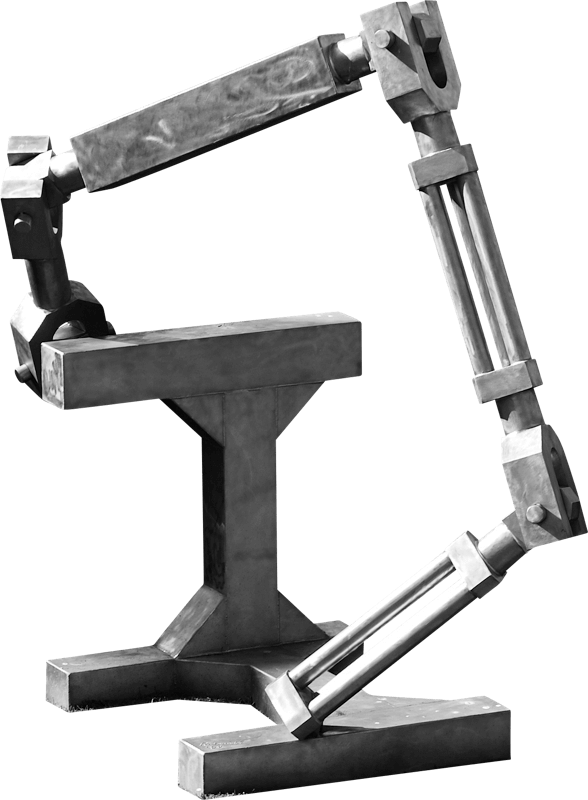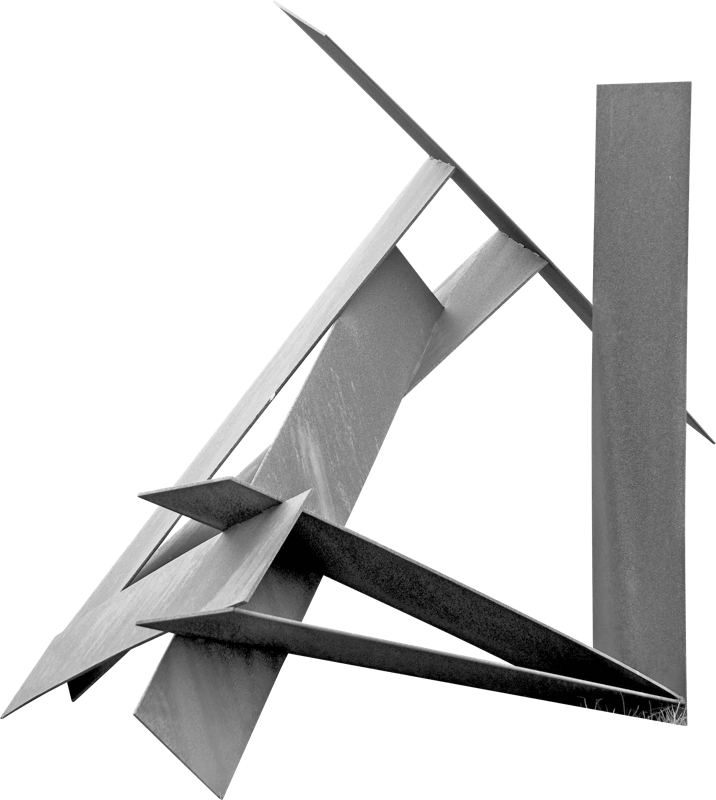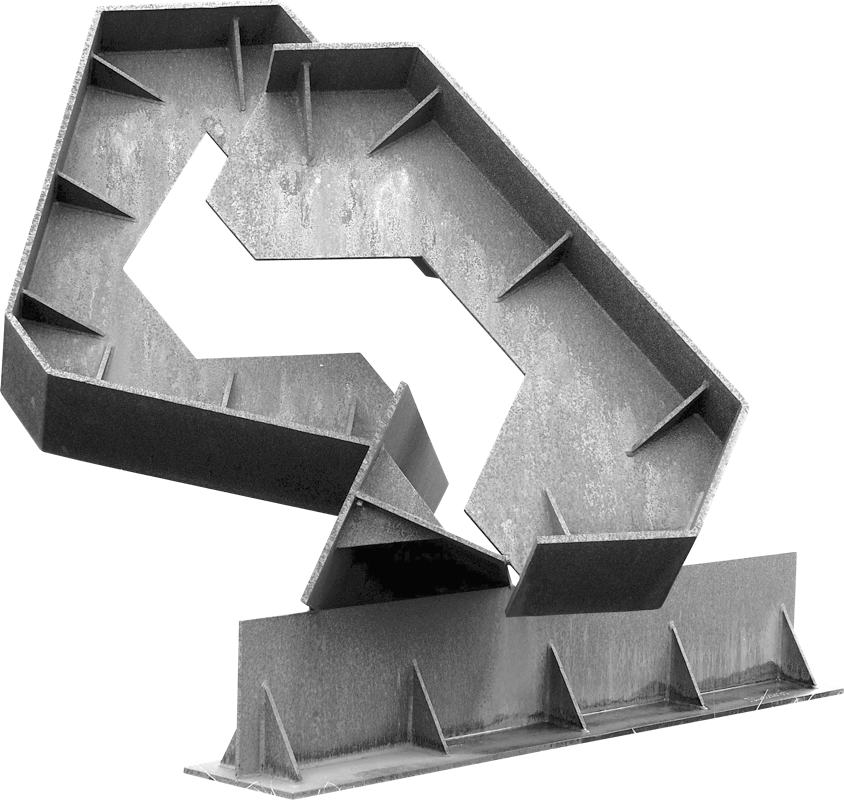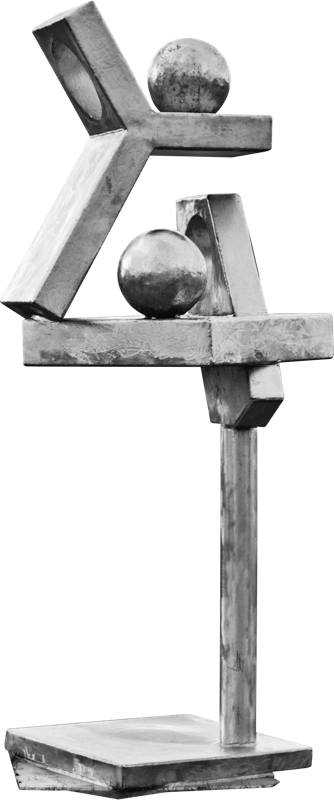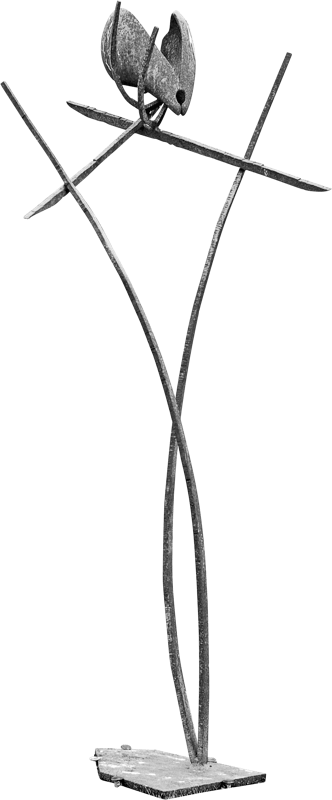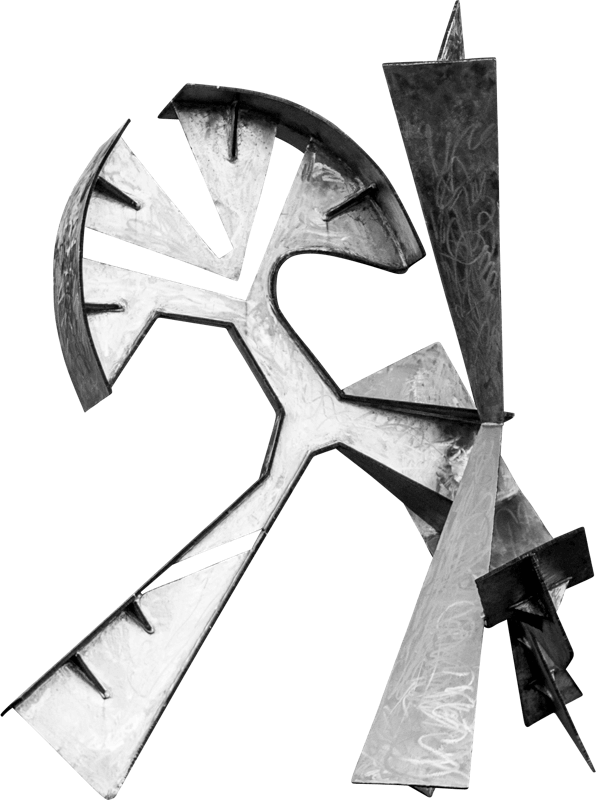The Sculpture Series of Jeffrey Rubinoff
The Rubinoff Sculpture collection is comprised of over 105 sculptures in nine series. The Early Works, completed in the early 1970s at the beginning of Rubinoff’s career, are grouped separately. After moving to Hornby island, Rubinoff began to work sequentially. Instead of working on several pieces simultaneously, he worked on one sculpture at a time, grouping related works into different series.
Rubinoff compared all of his works to music. “As you begin to see them, the sculptures unfold very musically. I have come to the conclusion that music is sculpture in elastic space, sculpture is music in plastic space… The first elements of a tonal scale are brought together into the first linear melody. The melody moves again on the basis of how you move around the piece. You must move around the piece, to, in a sense, hear the piece. That is an essential part of all of the work in the park.”
1971-75 | The early works were first displayed at the Ontario Science Centre. They explore a visual poetry of contrast between angular and fluid forms, and between vectors of motion. In the 1970s Rubinoff started to develop a language of counterpoint in ‘positive’ plastic form and ‘negative’ space.
1981-82 | Series 1 was the first to be fabricated on Hornby Island, and also initiates Rubinoff’s practice of working sequentially. The cuboid forms, made from stainless steel, have regular proportions and are plastic metaphors for musical melodies.
1982-83 | Series 1 successfully developed the idea of sculpture as a form of music, but Rubinoff was unsatisfied by its prevailing downward motions. In Series 2 he used the tensile strength of steel to create metaphorical gestures of ‘pulling-up’ while retaining the previous musical idiom.
1983 | Series 3 is composed of planar elements, in COR-TEN steel, of prescribed length and thickness. Much of their volume is constructed from ‘negative’ space, lending the pieces a sense of weightlessness. A slight bowing of the sheets imparts a sense of outward pressure.
1983-86 | Series 4 increases the density and complexity of the linear melodies of Series 3 by introducing T-sections. These pieces move upward through space, undulate, curve and fold in on themselves. The compositions are articulated by polyrhythmic triangular forms along the axis of motion.
1987-89 | This joyously musical series introduces the cast sphere, around which the compositions are based. The burnished vertical tubular elements burst up from the ground, with similarly expansive compositions at eye level. Counterpoint is used to balance pairs of elements in space.
1990-96 | This series is inspired by the fossilized animal remains found in the Burgess Shale, connecting the evolutionary artistry of 500 million years of natural history with the creativity found in art history.
1996-97 | Series 7 combines COR-TEN steel plate and stainless steel casting in acutely angled organic forms. The motifs allude to avian beaks and talons in flight.
2000-4 | The works in Series 8 are composed of vertebrate bone shapes cast in stainless steel. The bones are complemented by stainless steel ‘sinews’, the formal embodiment of aesthetic grace. The artist transforms these ‘bones’ into ‘birds’, which glide up and through space.
2010-16 | This series reverses the complex knotted introversion of Series 4, while sharing its formal idiom of the ‘T-section’. The burnished and highly polished surfaces reflect light in crystalline explosions of form. These are Rubinoff’s final masterworks of contrapuntal musicality, exuding light, grace and elevation.
Early Works
1971-75 | The early works were first displayed at the Ontario Science Centre. They explore a visual poetry of contrast between angular and fluid form, and between vectors of motion. in the 1970’s Rubinoff starts to develop a language of counterpoint in ‘positive’ plastic form and in ‘negative’ space.
Series 2
1982-83 | While Series 1 successfully developed the idea of sculpture as a form of music, Rubinoff was unsatisfied that its overall motion was downward. In Series 2 he uses the tensile strength of steel to create metaphorical gestures of ‘pulling-up’ while retaining the previous musical idiom.

